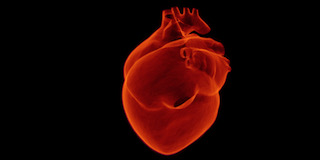Welcome to the exciting video course on ‘Brain Dissection’.
In this course, you’ll be able to visualise brain structure at different levels and explore the regions of the brain involved in sensory, motor, emotional and cognitive function. Expert neurosurgeons leads doctors on an exciting journey of function related to structure. Each area of the brain is carefully dissected, discussed and described by them in depth.This course will provide you with the knowledge to identify brain and spinal cord pathology and the associated clinical signs in patients.
This lesson containing incredible 26 video classes will allow you to learn all about the brain dissection at your own pace, so you can be sure to fully grasp the material. If you missed the brain dissection course in person, or if you want to review, on-demand brain dissection provides an opportunity for long term knowledge retention you can’t get elsewhere.
At the end of this course on Neuroanatomy video lessons with brain dissections, you will learn:
- How to gain access to human brain specimens for study
- Simplification of the anatomy of the brain, omitting some details and making numerous generalizations to aid in understanding
- The localization of a patient’s disease within the nervous system
- How to correlate structure and function of the brain
- Logical presentation sequence for a class, but each video can be used standalone to make a clinical point.
This study material will a great resource for medical students, neuroscience researchers, neurosurgeons, and anyone with a keen interest in understanding the intricacies of the human brain through dissection. It provides a comprehensive learning experience for individuals seeking a deeper understanding of brain anatomy and function.
This course – based on the content created by NeuroLogic Exam – comes with the courtesy of NeuroLogic Exam and is produced here, with their due permission.
Acknowlegements
Movies drawn from the Neurologic Exam, PediNeurologic Exam, and Neuroanatomy Video Lab websites are used by permission of Paul D. Larsen, M.D., University of Nebraska Medical Center and Suzanne S. Stensaas, Ph.D., University of Utah School of Medicine.
Additional materials for Neurologic Exam are drawn from resources provided by Alejandro Stern, Stern Foundation, Buenos Aires, Argentina; Kathleen Digre, M.D., University of Utah; and Daniel Jacobson, M.D., Marshfield Clinic, Wisconsin. Subsequent re-use of any materials outside of this program, presentation, or website requires permission from the original producers.
Disclaimer : The content in this course is educational in nature and intended solely as general health information. It is not a recommendation for treatment or medical advice. It is not a substitute for advice from a health care provider. If you as a patient are experiencing a medical emergency, contact your health care provider or an emergency room.
Course Curriculum
| Topics | |||
| Introduction to the Human Brain | FREE | 00:30:00 | |
| The Normal Unfixed Brain | 00:30:00 | ||
| Orientation: The Planes of the Brain | 00:30:00 | ||
| The Meninges | 00:30:00 | ||
| The Ventricles | FREE | 00:30:00 | |
| The Spinal Cord & Monosynaptic Reflex | 00:30:00 | ||
| The Unfixed Spinal Cord | FREE | 00:30:00 | |
| Cranial Nerves | 00:30:00 | ||
| Brain Stem & Reflexes | FREE | 00:30:00 | |
| Cerebral Circulation | 00:30:00 | ||
| Cortical Localization | 00:30:00 | ||
| Three Critical Vertical Pathways | 00:30:00 | ||
| Sensation from the Body | 00:30:00 | ||
| Sensation from the Face | 00:30:00 | ||
| The Most Important Pathway: Motor Control | FREE | 00:30:00 | |
| The Visual Pathway | 00:30:00 | ||
| Control of the Pupil | 00:30:00 | ||
| Control of the Eye Movements | 00:30:00 | ||
| Vestibular System | 00:30:00 | ||
| Auditory System | FREE | 00:30:00 | |
| Cerebellum | 00:30:00 | ||
| Basal Ganglia | 00:30:00 | ||
| Comparison of the Motor Systems | 00:30:00 | ||
| Hypothalamus | 00:30:00 | ||
| Olfactory System | 00:30:00 | ||
| Limbic System | 00:30:00 | ||
Course Reviews
No Reviews found for this course.




